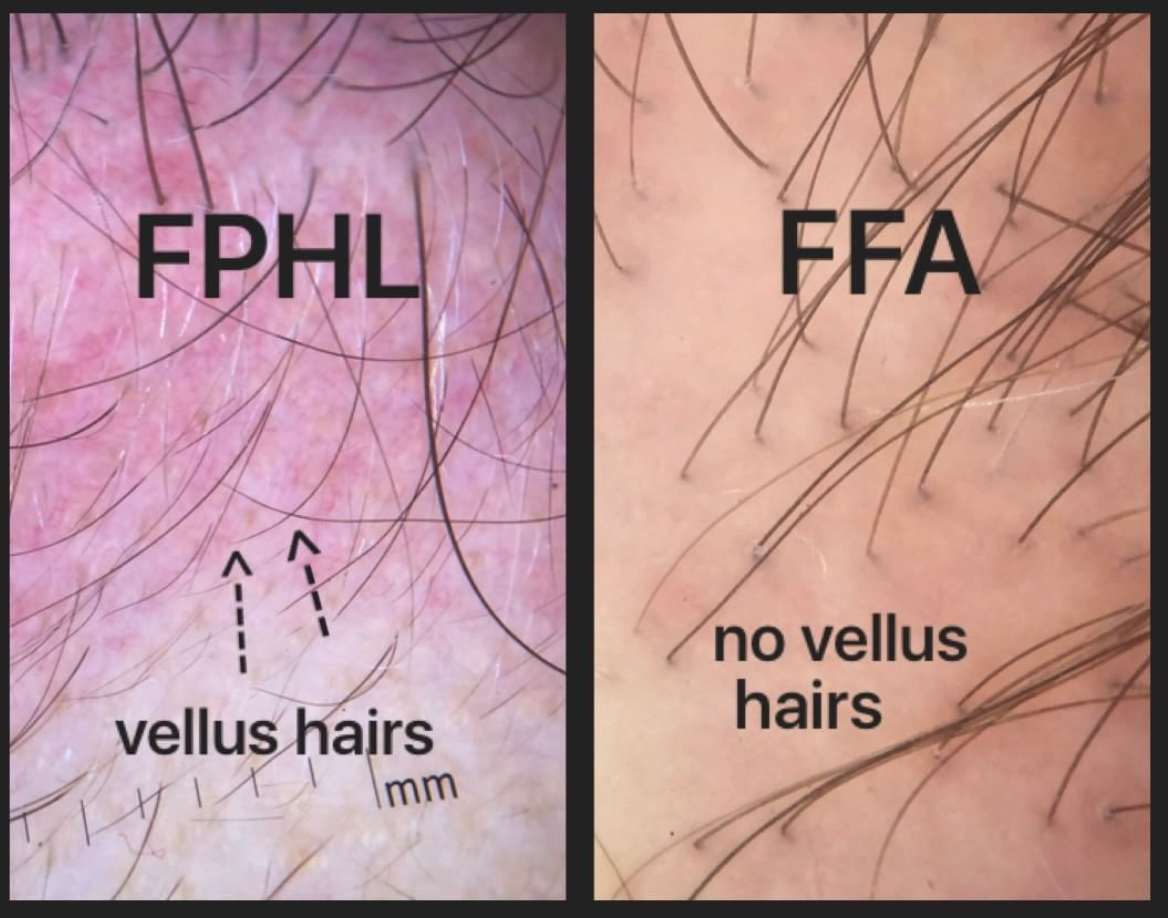Frontal Fibrosing Alopecia (FFA) and "Baby Hairs"
FFA Destroys Vellus Hairs
Many patients come to the office with worries that they might have frontal fibrosing alopecia (FFA). This autoimmune condition is becoming much more common and many patients are now aware of its existence. Given that alterations of the frontal hairline are so common in many hair loss conditions a great amount of confusion frequently arises.
Last week, we review some of the helpful and unhelpful pieces of information that patients relay when evaluating for FFA.
HELPFUL and UNHELP INFORMATION WHEN CONSIDERING FFA
Today we'll take a closer look at one feature that is seen on examination - and that is the presence of absence of vellus hairs.
The Frontal Hairline in FFA
Despite being a complex condition for which no cause is presently understood, FFA actually appears "simpler" than many conditions. The photo shows dermatoscopic images of FFA (right) and female pattern hair loss (FPHL, left). In FFA one can see that most of the hairs look fairly similar - all single hairs of similar caliber with no vellus hairs ("baby hairs" present. In contrast, the photo of FPHL looks much more complex. Thick hairs and thin hairs are seen and most importantly abundant "vellus" hairs are seen in the frontal hairline. There are other changes that help differentiate FFA from FPHL including redness around hairs, scaling, twisting of hairs (pili torti), atrophy or thinning of the skin and recession of the hairline itself. But the absence of vellus hairs is a fundamentally important difference that differentiates FFA from FPHL.
This article was written by Dr. Jeff Donovan, a Canadian and US board certified dermatologist specializing exclusively in hair loss.

